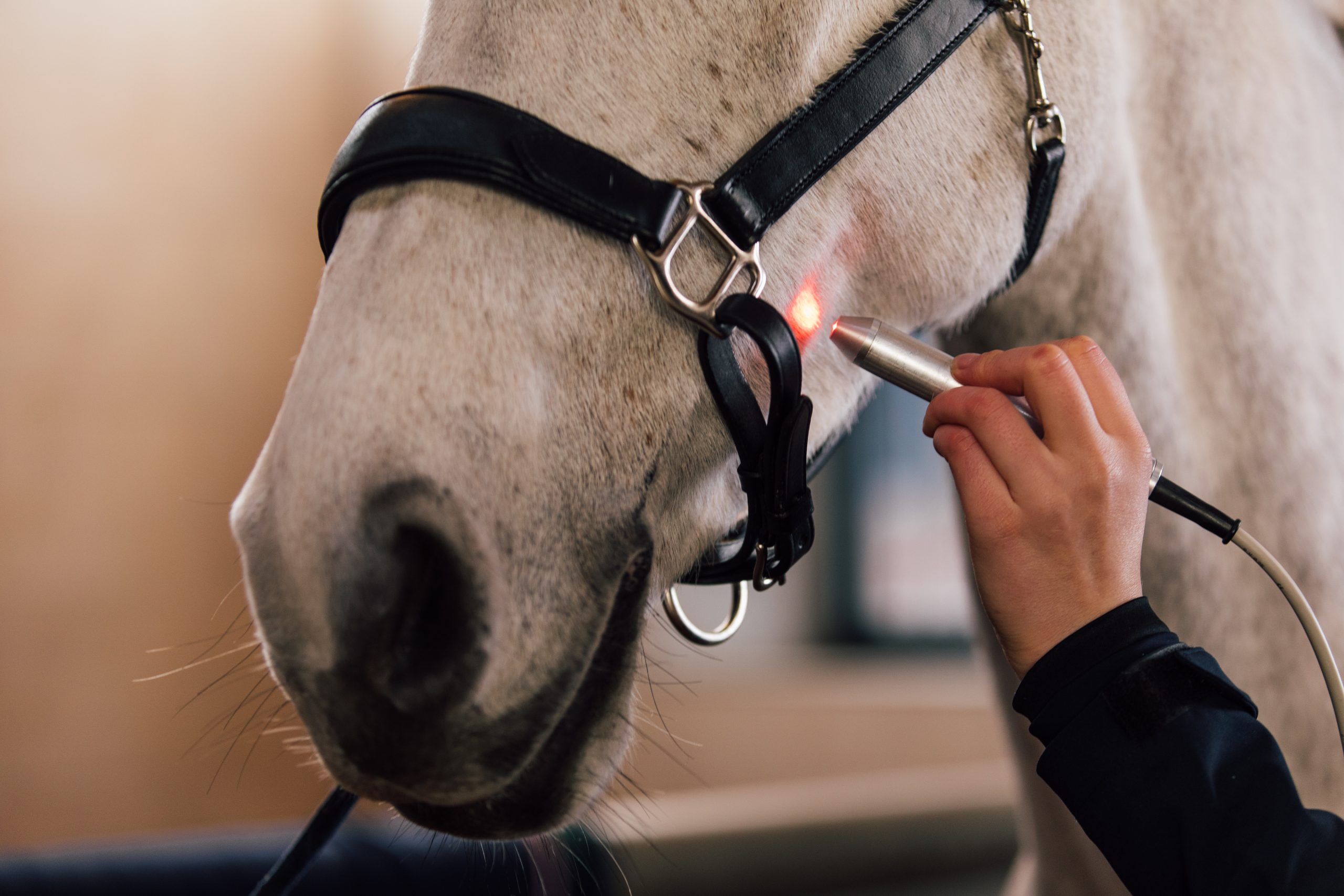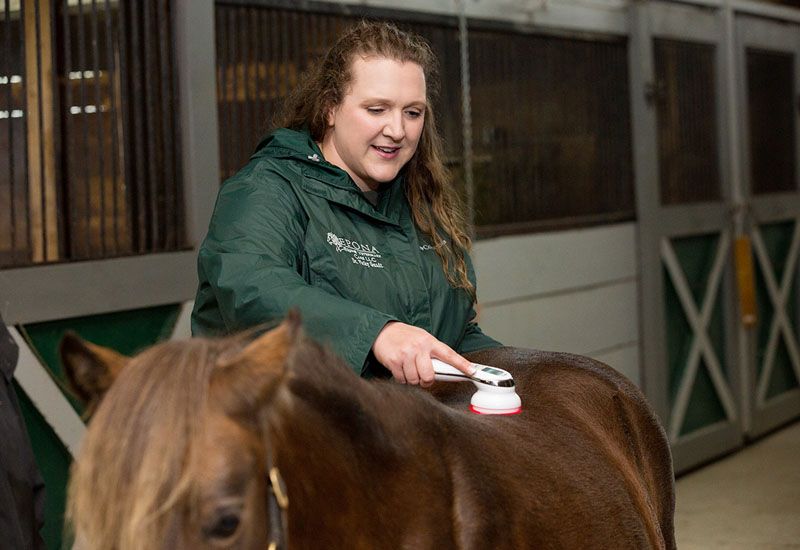Laser Treatment in Horse Treatment: A Modern Approach to Improving Steed Wellness
Laser therapy has arised as a pivotal technique in equine therapy, making use of concentrated light energy to promote mobile repair and speed up recuperation from a variety of ailments. By promoting mitochondrial task and boosting ATP production, laser therapy not only enhances flow yet also offers considerable discomfort alleviation.
Understanding Laser Treatment
Laser treatment, a non-invasive treatment technique, has actually obtained substantial traction in equine medication because of its efficiency in advertising recovery and discomfort alleviation. This innovative healing approach utilizes focused light energy to penetrate tissues, fostering cellular repair work and regeneration. The underlying system entails the excitement of cellular mitochondria, leading to boosted manufacturing of adenosine triphosphate (ATP), the power currency of cells. Improved ATP degrees expedite tissue repair service procedures and minimize swelling, making laser therapy particularly reliable for dealing with musculoskeletal injuries, wounds, and other inflammatory conditions in equines.
There are a number of sorts of lasers used in equine therapy, each with particular wavelengths and power results tailored to different healing needs. Low-level laser treatment (LLLT), additionally understood as chilly laser therapy, uses reduced power degrees to promote cell feature without triggering thermal damage. High-intensity laser therapy (HILT), in comparison, makes use of greater power levels to accomplish deeper cells infiltration and more significant therapeutic impacts.
Veterinarians utilize numerous laser tools and methods relying on the problem being treated and the desired depth of tissue infiltration. Correct training and expertise are critical for making sure the secure and efficient application of laser treatment, thus optimizing its restorative possibility while reducing risks.
Advantages for Horse Health And Wellness
With a strong understanding of exactly how laser therapy works, it is essential to explore its various advantages for equine wellness. Among the main benefits is its ability to speed up tissue repair work and cell growth. By stimulating mobile function, laser therapy advertises faster wound healing and aids in the regeneration of damaged cells. This can be particularly beneficial in lowering recovery times for horses dealing with injuries.
Furthermore, laser therapy has actually been shown to improve blood circulation, consequently boosting blood circulation to influenced areas. Boosted flow makes certain that crucial nutrients and oxygen are supplied extra successfully, promoting the recovery process. Additionally, laser therapy's anti-inflammatory impacts help in minimizing swelling and pain, which is important for the overall wellness of the steed.
Discomfort management is an additional considerable advantage. By releasing endorphins and blocking pain signals, laser therapy gives reliable, non-invasive alleviation from both severe and persistent discomfort. This can contribute to enhanced wheelchair and high quality of life for the animal.
Last but not least, laser treatment is a non-invasive treatment option, lessening the threat of difficulties connected with more intrusive treatments. Its flexibility and efficiency make it a very useful tool in modern equine veterinary medication.
Usual Conditions Dealt With

An additional common problem treated with laser therapy is arthritis. Steeds struggling with both severe and chronic arthritis take advantage of the anti-inflammatory impacts of laser treatment, which aids to ease discomfort and boost joint feature. Furthermore, laser treatment is used in the monitoring of wounds. Whether managing medical incisions or terrible injuries, the technique advertises much faster cells repair service and lowers the risk of infection.
Equine respiratory system problems, such as frequent respiratory tract obstruction (RAO), likewise react positively to laser treatment. Laser treatment is helpful in dealing with unguis problems, consisting of laminitis and abscesses.
Procedure and Safety And Security
Implementing laser therapy in advice equine treatment entails a precise treatment to ensure both effectiveness and security. Equine Therapy. The procedure begins with an extensive vet evaluation to establish the suitability of laser therapy for the horse's specific condition. Once deemed appropriate, the treatment area is prepared by cleaning and, if necessary, clipping the hair to improve laser infiltration
The practitioner should choose the proper sort of laser, normally a low-level laser (LLLT) or a high-power laser (HPL), relying on the problem being dealt with. The laser tool is after that adjusted to the suitable wavelength, power, and period setups. During the application, the professional relocates the laser over the targeted location in a methodical way, making certain consistent and even exposure.
Safety protocols are purely stuck to, consisting of making use of protective glasses for both the specialist and the equine. In addition, it is important to keep an eye on the equine for any indications of pain or damaging responses throughout the treatment. Post-treatment, the steed is often given a period of rest to allow the therapeutic effects to manifest.

Future of Equine Laser Therapy
As advancements in vet medicine proceed to unfold, the future of equine laser treatment holds considerable promise. Arising innovations and deeper clinical insights are established to fine-tune and expand the applications of laser treatment for equines.
Furthermore, ongoing research study into the molecular go to this site and mobile mechanisms of laser treatment will likely yield optimized methods tailored to particular problems, enhancing effectiveness and minimizing treatment times. Individualized treatment plans based upon genetic and biochemical pens might come true, making sure that each equine gets the most proper and effective treatment.
Furthermore, governing advancements and standardization of methods will improve the trustworthiness and reliability of laser therapy in equine technique. Equine Therapy. As these site here developments remain to emerge, equine laser treatment is positioned to end up being an important part of veterinary care, offering boosted healing and enhanced top quality of life for equines around the world
Conclusion
